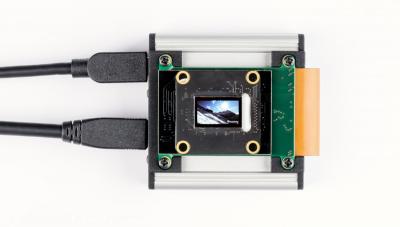
05-05: Huawei and the Ministry of Posts and Telecommunications of Cambodia have signed agreement for 5G development; Xiaomi says that it has shipped over 27.5M smartphones in 1Q19; etc.
Chipsets
The key takeaways from Credit Suisse for 1Q19 semiconductor sector in Asia: (1) Taiwan tech should see a modest and uneven recovery expected for 2Q19, (2) inventory to take 1-2 more quarters to normalize, (3) TSMC to maintain a sharp 2H19 rebound keyed by 7nm projects, (4) 5G builds continue, with a 2020 5G iPhone now more possible, (5) data center still decelerating from a strong year, (6) 8” foundry utilization should stay slightly lower, (7) wafer pricing may also tilt slightly lower, (8) back-end capex staying disciplined to restore balance, and (9) valuations back to mid-cycle following the rebound. (Credit Suisse report)
Intel has initiated an end-of-life plan for its Movidius Neural Compute Stick, which is based on the Myriad 2 VPU. It will be available for another year and Intel will continue to provide technical support for the device for another 2 years. For developers currently working on products powered by the NCS, Intel suggests developers move over to the more advanced Myriad X-based Neural Compute Stick 2. (AnandTech, Intel)
Touch Display
Everlight Electronics has become a supplier of LED flashes and sensors for almost all China-based smartphone vendors. Currently, smartphone-use LED devices account for over 10% of Everlight’s consolidated revenues and backlighting application to LCD TVs, notebooks and LCD monitors for about 15%. (Digitimes, press, UDN)
The Fraunhofer FEP has developed a new OLED Microdisplay specifically for industrial augmented reality (AR) data glasses. The new microdisplay features a 1280×720 resolution with a diagonal size of 0.64” (subpixel size is 5.5µ). The power consumption is 160mW at 120fps. (OLED-Info, Display Daily, PEN)
Sensory
According to IHS forecasts, the global sales of L4 self-driving cars will reach 600K units in 2025 and 21M in 2035. According to Guantian, the penetration rate of global ADAS will increase rapidly: in 2020, the self-driving penetration rate of L1 and L2 will reach 40%, and the L3 will enter mass production with a penetration rate of 5%; in 2025, L1 and L2 penetration rate will reach 50%, the L3 penetration rate will increase to 15%, the L4 will enter mass production, and the penetration rate will reach 5%. By 2040, all new cars will be equipped with self-driving function, among which L4 penetration rate will reach 50%. (Orient Securities report)
Battery
Geely Technology Group New Energy Battery Research Institute project is signed and settled in Jiaxing Xiuzhou National High-tech Zone. It is understood that the total investment of the project is expected to be CNY3B. It is the new energy battery R&D headquarter of Geely. It is expected to enter operation in 2019. (My Drivers, Auto Home, CN Beta)
Connectivity
According to IPlytics, China’s share of 5G standard-essential patent filings has grown sharply from the 4G era, and could enable Chinese companies to earn a third of all 5G patent revenues. Chinese companies account for 34% of worldwide applications for major patents related to 5G technology, putting it in a position to drive the development of new industries that use ultrafast-communication networks. (My Drivers, VentureBeat, Asia Nikkei, IPLytics report)
Huawei and the Ministry of Posts and Telecommunications of Cambodia have signed agreement, which will allow the development of 5G networks to improve the speed of the mobile Internet and optimize the quality of digital connections. In Southeast Asia, Thailand, the Philippines and Malaysia have partnered with Huawei to develop 5G networks. (GizChina, IT Home, Phnom Penh Post, Strait Times)
Phone
Xiaomi says that it has shipped over 27.5M smartphones in 1Q19. (IT Home, Android Headlines, Gizmo China)
vivo S1 Pro is announced – 6.3” 2340×1080 FHD+ Super AMOLED, Qualcomm Snapdragon 675, rear tri 48MP-8MP ultrawide-5MP depth + front pop-up 32MP, 6+256GB / 8+128GB, Android 9.0, under display fingerprint scanner, 3700mAh 22.5W fast charging, CNY2,698 (USD400). (GizChina, GSM Arena, vivo)
ZTE has announced 5G phone AXON 10 Pro – 6.47” 2340×1080 curved AMOLED, Qualcomm Snapdragon 855, rear tri 48MP-8MP telephoto-20MP 125º ultrawide + front 20MP, 6+128GB, Android 9.0, under display fingerprint scanner, 4000mAh 18W fast charging, wireless charging, IP68 rated. (My Drivers, Sina, Phone Radar, Sohu)
Automotive
According to Orient Securities, the current global self-driving technology is focusing on Level 2 – Level 3 stages. Self-driving will be initially commercialized in 2020 and will enter the outbreak in 2025-2035. Level 1 is mainly early warning function, Level 2 is for intervention auxiliary function, technically mature, and many mid- to high-end models with Level 1 have entered mass production. Level 3 is a comprehensive auxiliary function and has a full technical reserve. The focus in the future is on the localization and the penetration of mid- to low-end models. According to the plans of major manufacturers, L4 – L5 mass production will be after 2020. (Orient Securities report)
Artificial Intelligence
IBM Research, in collaboration with New York University, has used AI to discover retina imaging data that could be used to detect and manage glaucoma. A deep learning system estimates the visual field index (the degree of visual function) based on a single 3D scan of the optic nerve, giving an idea of how glaucoma has developed with greater accuracy than conventional tests. (Engadget, IBM, Sohu)











